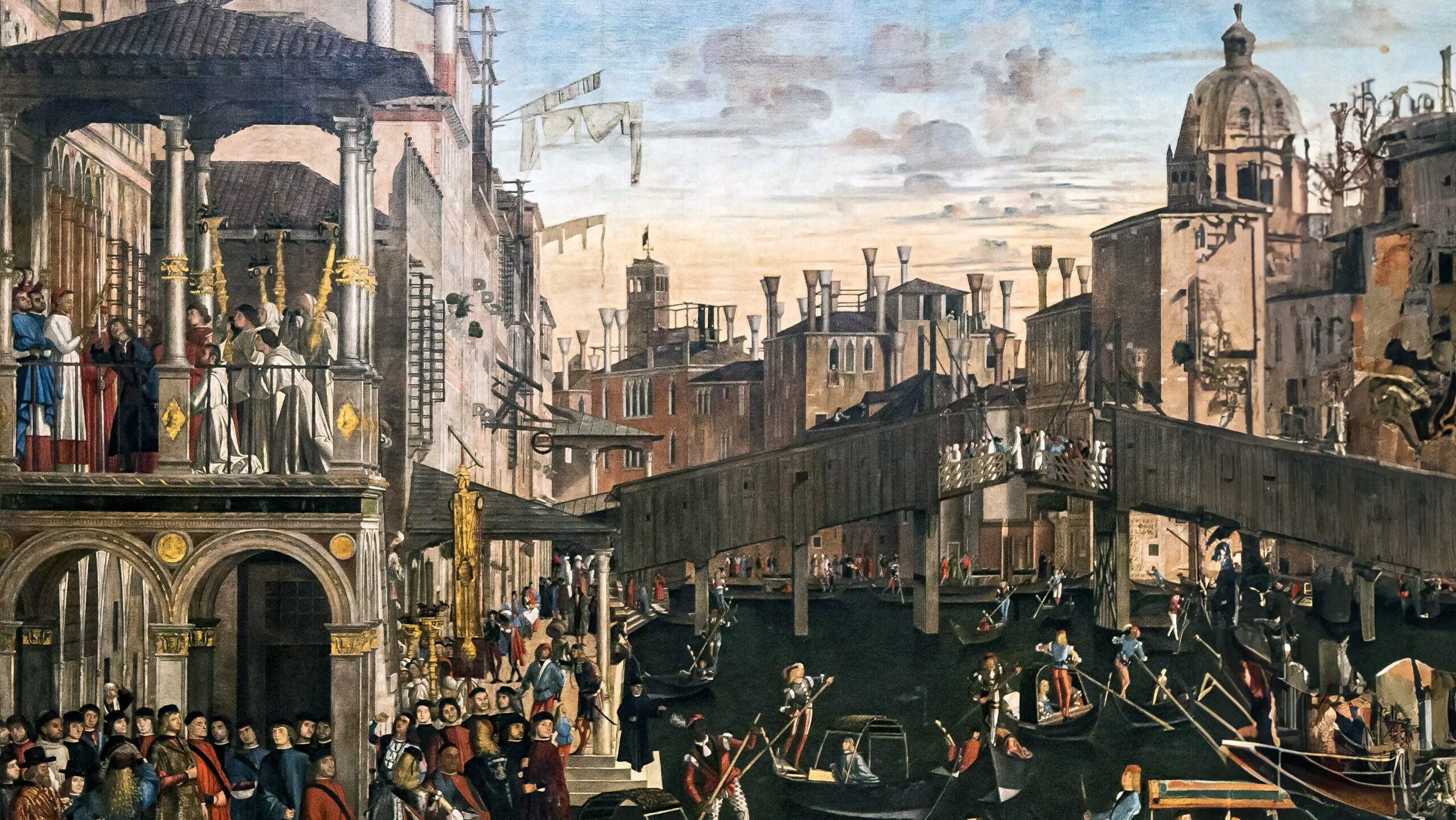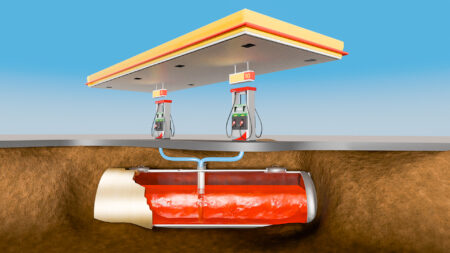The year is 452, the Roman Empire is on the brink of collapse and the Huns have just launched their attack on Northern Italy. Several cities are completely destroyed, forcing the locals to go on the run. They head for a lagoon just off the coast, and take refuge on several small islands, a decision that would no doubt save their lives. Against all odds, this small civilization eventually went on to build one of the most impressive feats of engineering the world has ever seen, Venice.
Invasions continued for the next 300 years, but this complex maze of islands with shallow land made it difficult for enemies to reach them by boat, and so more and more people started moving to the islands.
Despite having no roads, no land and no fresh water, the Venetians managed to turn a muddy swamp into the most powerful and wealthiest city of its time. This unique layout of canals and bridges woven through hundreds of islands made Venice incredibly accessible, and it became the epicenter of all business. We modeled the entire thing, to show you what’s going on beneath the surface, and how its clever design and medieval engineering allowed it to take over the world.
Building the foundations
When the first refugees arrived to start their new lives on the islands, they had the worst possible surface to build on. The small marshy islands were made of incredibly soft clay, which could barely hold the weight of a human, let alone an entire city. To create stable foundations for buildings, the Venetians collected large timber piles from the forests of Croatia and started hammering them into the ground. They drove them around 5 meters deep, until they reached a much harder layer of clay. Not only did this stabilize the piles, but by packing them really close together, it compressed the surrounding clay, pushing out the water and making it much stronger.

Once the piles were firmly in the ground, the tops were cut off and wooden planks were laid on top to spread the load. Special blocks of Istrian stone were then placed, to raise the foundations above the water. This design was a stroke of genius, as the wooden piles were sealed away from the air, making it impossible for them to rot.
Amazingly, most of the original wooden piles placed over 1,000 years ago still exist and are in great condition. Without oxygen to make the wood rot, these piles have been perfectly preserved. In fact, the piles have become stronger over time. This is because the lagoon around Venice is particularly salty, which over time has petrified the wood, turning it into a hard stone like material.

Once the foundation had been properly laid down, the buildings themselves were built. Venetians started off using wood for their houses, but after numerous fires, they switched to brick. To keep the buildings as lightweight as possible and to avoid sinking, the Venetians came up with strict rules that buildings had to follow. They had to be no more than 3 stories high and made with lightweight hollow bricks. Lime mortar had to be used instead of cement, because it was flexible and would allow the entire building to flex, as the ground beneath slowly moved.
The inner walls were built out of wood in a criss-cross pattern that could also flex like a trellis. The facade walls which had large windows and elegant stone designs made them much heavier than the brick side walls. And so in order to stop them from falling over, they were pinned into the floors using iron rods, keeping the entire building together.

The Islands of Venice
This method of building worked well for the Venetians, and soon several islands around the lagoon were established this way. Instead of expanding outwards like most cities, these islands expanded into each other. At first, boats were the only way to cross between the islands, but eventually the islands grew closer together and many could be crossed by simply wading through the shallow water on a horse. The next step in Venice’s evolution would of course be connecting the islands.
Bridges in Venice
Surprisingly, there were no bridges for the first 500 years of Venice’s existence. But as the population increased and business started to ramp up, there needed to be an easier way to reach Rialto, the financial center of Venice.
The first attempt was a simple pontoon bridge, made out of boats and wood that crossed the Grand Canal. This joined the two largest sections of Venice together, and crucially provided quick access to the Rialto area, which was the financial center of Venice.
The bridge was later upgraded to a wooden bridge, which eventually burned down and collapsed before it was finally replaced by a much stronger stone bridge.

To build it, over 12,000 timber piles were driven into the banks of the canal, and 10,000 tonnes of stone were built on top to form the bridge. To this day, the bridge still stands and it serves as the main artery in the center of Venice.
After this, stone bridges started to pop up everywhere, turning Venice into a compact city made up entirely of canals instead of roads. This gave Venice a unique advantage, since the canals allowed goods and traffic to flow quickly through every part of the city. The messy overlap of pedestrians and horse-drawn traffic didn’t exist in Venice, since the walkways and canals were completely separated. Yet people could transition between the two effortlessly, without slowing down.
By now, the city had become the most powerful and richest city in Europe. Everything being bought and sold went through Venice, and the Venetians were making enormous amounts of money. The city became the center of commerce, trading silk, grain, spice, and art from the 13th century to the end of the 17th.
At the peak of its power and wealth, it had 36,000 sailors operating 3,300 ships, dominating Mediterranean commerce. But as business increased, so did the population, and the demand for fresh water was out of control.
Fresh water supply system
Despite being surrounded by water, Venice couldn’t use any of it, since it was extremely salty and undrinkable. Without natural springs or rivers to collect fresh water, Venice relied upon boats to deliver water from the mainland. But with 170,000 people now living in this tiny city, the demand became too much – and the Venetian engineers, once again, had to get creative.
From the beginning, Venetian islands were built around squares, which were initially just empty fields for animals to graze upon. The idea was to use these squares to collect rainwater.
They started by digging out large areas under the entire square and lining the walls with a thick layer of clay to make it waterproof. The space was then filled in with sand and stones, and the surface was redone with tiles that would lead the water towards drains at each corner of the square. From here, rainwater would flow into the basin and gradually filter through the sand and stones until it reached the main well at the center of the square.
To maximize the surface area for water collection, the roofs of the nearby buildings were all fitted with gutters that would direct the water onto the square and into the drains. Venice then became an enormous funnel for rainwater which filled more than 600 wells all around the city. At 8 in the morning, water maids would start filling buckets of water from the well and delivering them to homes all around the city. The Venetians had once again engineered a masterpiece to save its city, but there was still one huge problem, waste.

Waste managment in Venice
Until this point, people just threw all of their waste out of the window. Some of it landed in the canal, but for those that didn’t live within throwing distance of a canal; people’s urine, feces and rotten food all ended up on the streets.
And so in the 16th century, the Venetians started building a network of underground tunnels that would collect the waste from every building and flush it into the canal. The tunnels were built almost a meter under the water level – so that when the tide of the lagoon was down, solid waste would collect at the bottom, and the liquids would naturally flow into the canals.

Then, when the tide rose, it would flood the tunnels and pull the solid waste into the canal. The motion of the tide coming in and out twice a day would exchange the dirty water for fresh water from the sea, essentially flushing Venice from all of its waste.
The extremely salty water that passed through Venice worked as a strong disinfectant and thanks to this system, the streets became clean. But the very canals that were now flushing Venice of its waste were under threat of disappearing.
Redirecting rivers
All of the rivers that flowed into the lagoon were carrying alluvium, a deposit of silt and gravel which, over time, was building up in the canals and essentially drying out Venice. To control this problem, Venetians undertook the enormous 200 year task of diverting these rivers around the lagoon and into the sea, therefore slowing down the deposit of gravel into the lagoon.
Amazingly, almost all of the incredible engineering that made Venice is still around today. The bridges, the canals, the buildings are all ancient relics, sitting on a forest that has held up the entire city for over a thousand years.













Look the US Airship Neponset.The First American Commercial Blimp. She was used for Advertising. Un-like the Columbia (one advertiser-Goodyear Rubber), Neponset would advertise for ANYONE. Look up the “Etta Jenick” Blimp. Direct connection with Nathan Tardiff, Creator of Noodler’s Ink & Pen